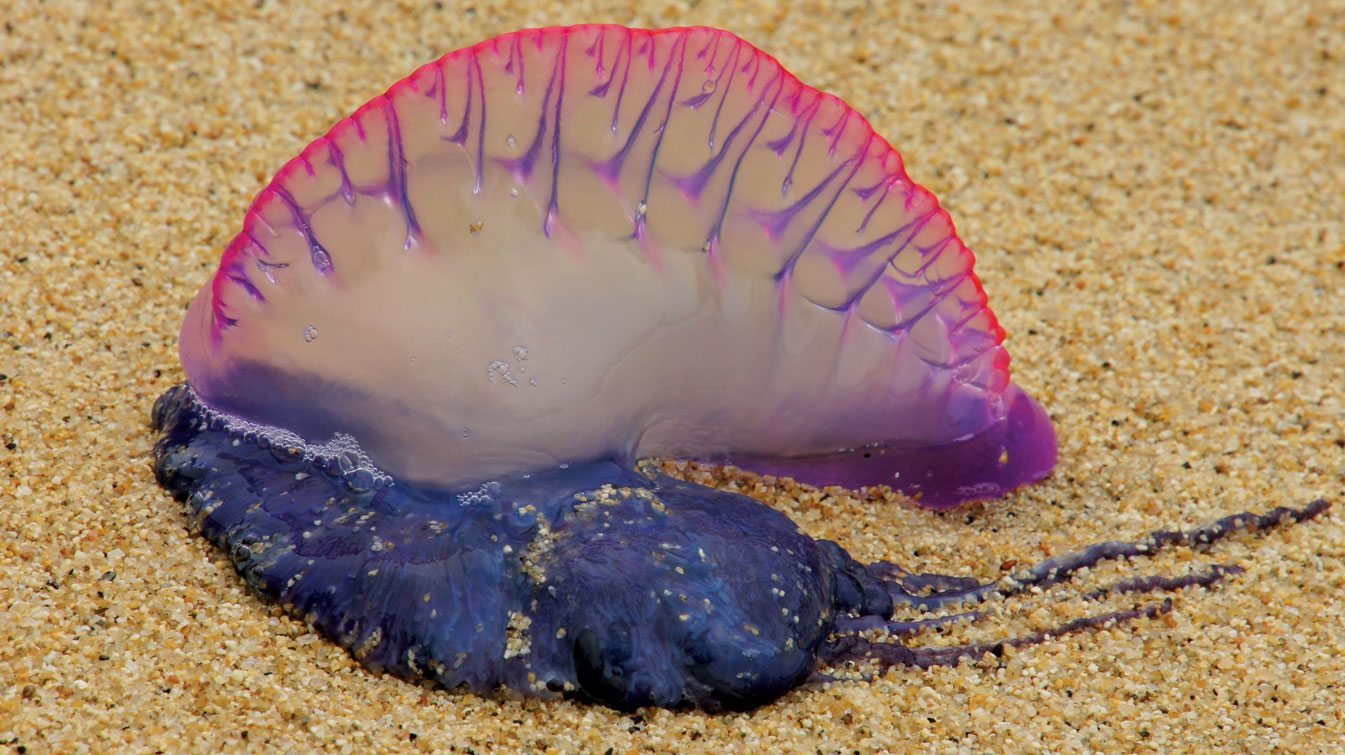Anyone unfamiliar with the biology of the venomous Portuguese man-of-war would likely mistake it for a jellyfish.
Not only is it not a jellyfish, it’s not even an “it,” but a “they.” The Portuguese man-of-war is a siphonophore, an animal made up of a colony of organisms working together. The man-of-war comprises four separate polyps. It gets its name from the uppermost polyp, a gas-filled bladder, or pneumatophore, which sits above the water and resembles an old warship at full sail. Man-of-wars are also known as bluebottles for the purple-blue color of their pneumatophores.
The tentacles are the Portuguese man-of-war’s second organism.
These long, thin tendrils can extend 165 feet (50 meters) in length below the surface, although 30 feet (10 meters) is more the average. They are covered in venom-filled nematocysts used to paralyze and kill fish and other small creatures. Muscles in the tentacles draw prey up to a polyp containing the gastro zooids or digestive organisms. A fourth polyp contains the reproductive organisms.
Portuguese Man-of-wars are found, sometimes in groups of 1,000 or more, floating in warm waters throughout the world’s oceans including the Caribbean Sea.
They have no independent means of propulsion and either drift on the currents or catch the wind with their pneumatophores. To avoid threats on the surface, they can deflate their air bags and briefly submerge. The Man-of-War is eaten by many animals, including sea turtles.

The threatening danger of bluebottles is not always obvious in the water.
Tentacles may break away from the colony in the surf and inflict stings just as potent as those from attached tentacles. Even dead specimens stranded on the beach, or entangled in fishing nets can still cause stings. To avoid being stung, never touch these animals with bare skin and DO NOT ENTER THE WATER IF THEY ARE PRESENT. For humans the sting is very painful and can cause serious effects, including fever, shock, and interference with heart and lung action.
The toxin secreted from the tentacles of a man-of-war is about seventy-five percent as powerful as cobra venom.
The most common result of contact with the man-of-war is residual whip-like, red, wavy, stringy welts on the skin from contact with the tentacle. The lesions can last for minutes to hours.
What to do If you are stung: Pick off any visible tentacles, using a towel, fins etc.
Rinse with fresh or salt water. Apply ice for pain. Do not apply vinegar. A study shows that vinegar in these stings sometimes makes the sting worse. For severe pain, try applying heat or cold, whichever feels better to the victim. IMMEDIATE MEDICAL ATTENTION MAY BE REQUIRED as the stinging may bring about shock.





